Runner’s Knee Exercises To Improve Your Strength Before Injury Strikes
Strength and flexibility are your allies in the battle against this common running injury, and overtraining is your sworn enemy
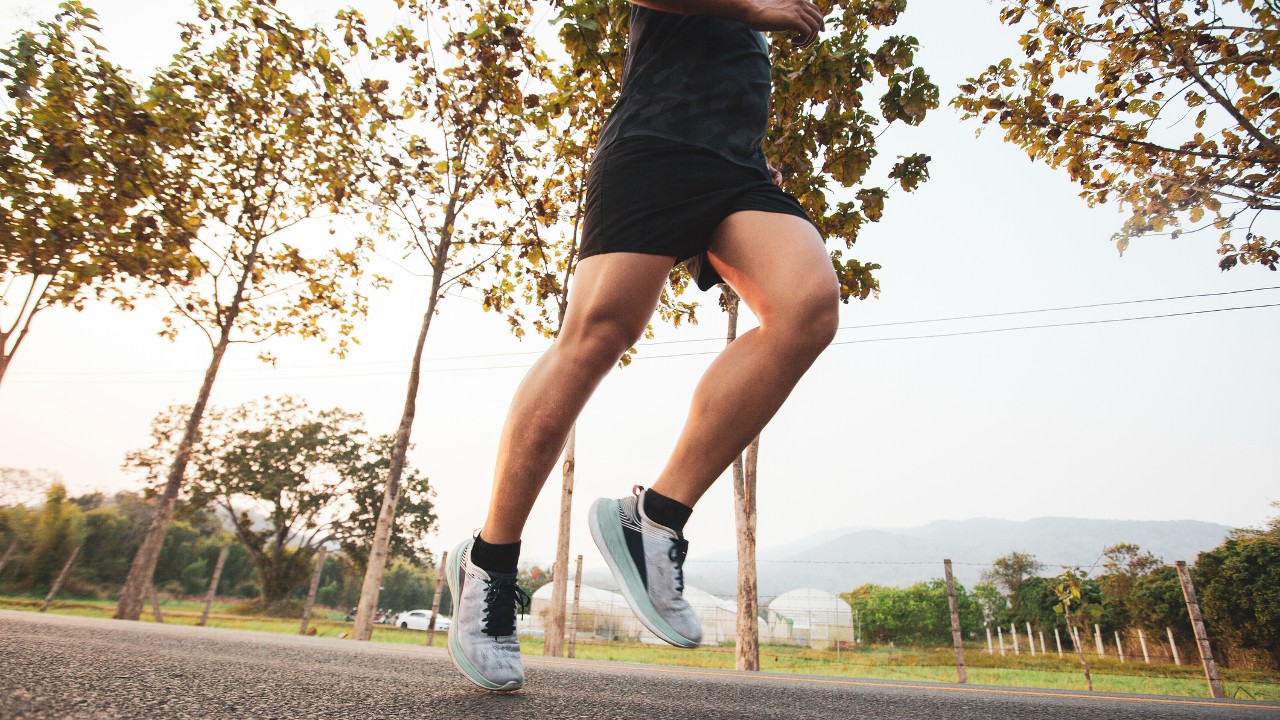
While it’s a myth that running is bad for your knees – it can in fact be beneficial in preventing osteoarthritis – that’s small comfort to those runners who develop knee pain. Runner’s knee is one of the most common running injuries, and one of the hardest to overcome if it does strike you down.
The medical name for runner’s knee is patellofemoral pain syndrome (PFPS), which is an umbrella term for pain at the front of the knee. Like many other running injuries including achilles tendon pain and plantar fasciitis, runner’s knee is often caused by overuse and frequently arises when people suddenly increase their training load
“This injury is usually from overtraining caused by increasing the volume, speed or intensity of the sessions,” says Michael Harrop, a specialist physiotherapist and founder of Fix Physio. “For example, it’s often seen in runners who rapidly change their training when preparing for a big event, such as a marathon.”
Michael Harrop graduated as a physiotherapist from the University of Essex in 2008 and worked in the NHS for five years before achieving an MSc in advanced neuromusculoskeletal physiotherapy at King’s College London. Harrop worked at Pure Sports Medicine for seven years before founding Fix Physio in Cardiff. He has worked in elite sport throughout his career, working with Brentford Football Club and British Swimming among many others.
Harrop says that runner’s knee can account for up to 30% of running injuries, so whether you’re a new runner or an experienced one about to begin a marathon training plan, it’s wise to take precautions to reduce the risk. Strength training that’s suited to runners can be a key tool in ensuring your body can handle the load. Harrop has shared a workout below which is well worth adding to your training routine (as a preventive measure, not a treatment), and our expert guide to strength training for runners has more advice. This guide to knee-strengthening exercises may also come in handy.
Even with regular prehab, no-one is immune to injury. If you are running regularly and do experience any pain in the knee it’s easy to assume that you have runner’s knee, but it’s not always that clear-cut, so it’s certainly worth seeing a specialist before trying any treatment,
“Different conditions can also present in a similar way,” says Harrop. “So getting it diagnosed by a physiotherapist or sports and exercise medicine doctor is essential to ensure you correctly manage the problem.”
If it is runner’s knee then Harrop recommends following this five-step plan to deal with the injury:
Get the Coach Newsletter
Sign up for workout ideas, training advice, reviews of the latest gear and more.
- De-load. “Reduce stress on the irritated tissues by decreasing your running volume to the level that your pain starts to settle.”
- Re-load gradually. “Research from Australia recommends not increasing the training load more than 10% per week in elite level athletes. Returning too fast and too hard will lead to injury, so recondition yourself slowly and allow your body time to adapt.”
- Technique. “Good running form does a lot to reduce the impact on your joints and muscles. Getting a professional to assess your form is important.”
- Stretch. “To reduce muscle tension and uneven forces across the joints.”
- Strengthen. “Glutes, calves and quadriceps. Like good technique, strong muscles also help reduce joint loading.”
Runner’s Knee Workout
To help strengthen and condition your body so it is better prepared to deal with the demands of running, and thereby protect against runner’s knee, follow this seven-step workout. Harrop recommends doing two rounds of the following seven exercises three times a week.
1 Roll down
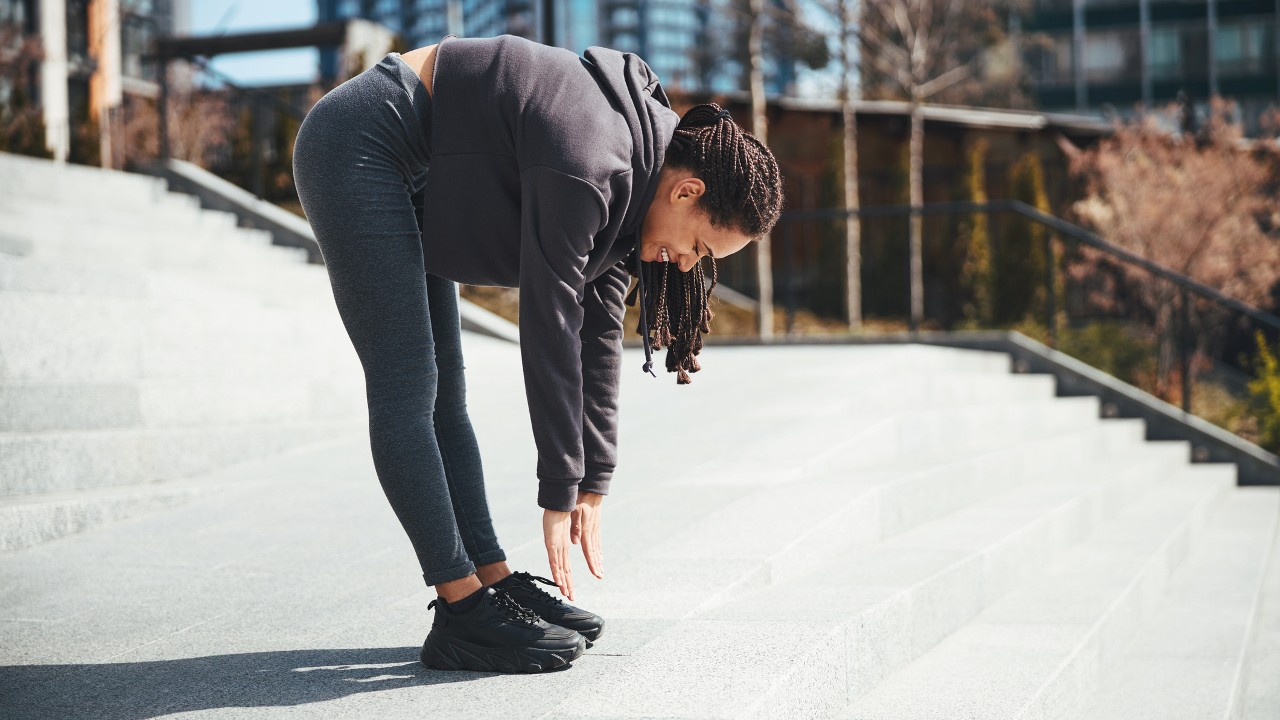
Sets 1 Reps 10
Why “Runners get stiff lower backs and hamstrings. This exercise stretches them both,” says Harrop.
How “Stand tall and curl your head, chest and trunk down, slowly and steadily reaching towards your toes. When you reach your limit, gently tighten your glutes and slowly reverse the direction to curl back up. Think of stacking each segment of your spine on top of one another.”
2 Bulgarian split squat
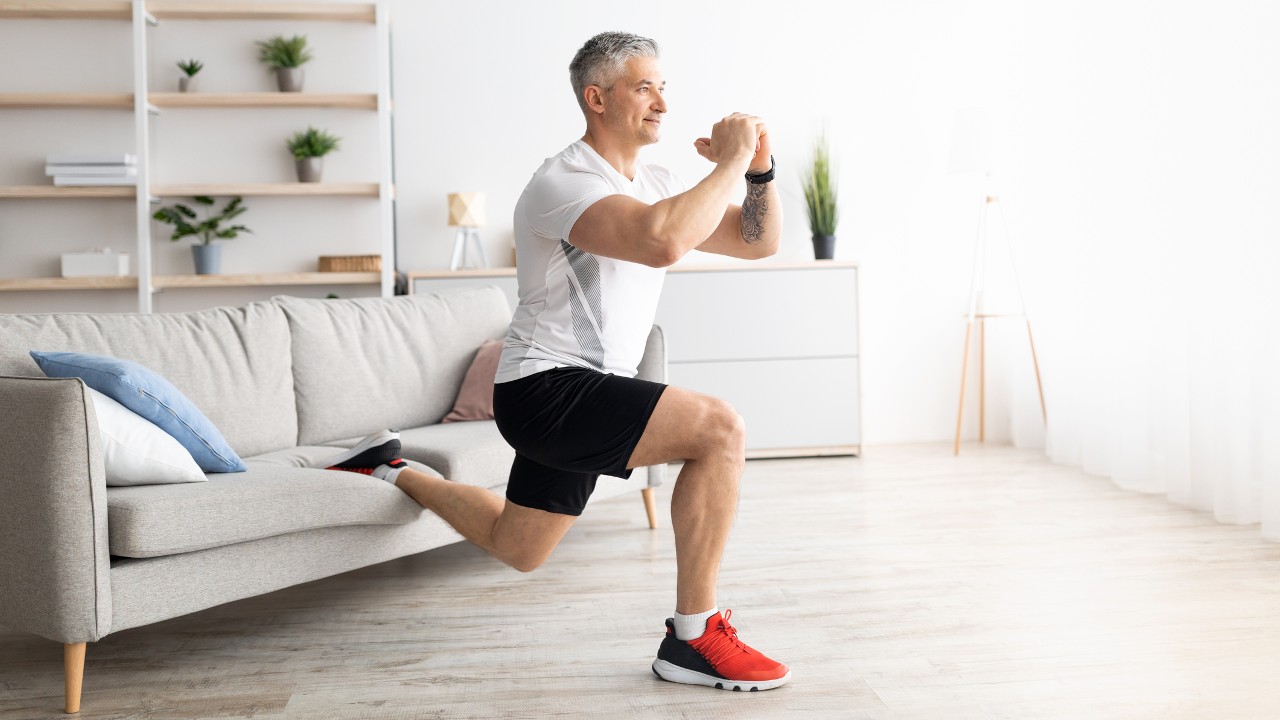
Sets 3 Reps 8 each leg
Why “This improves single-leg balance while strengthening your glutes, quads and hip muscles,” says Harrop.
How “With one foot on a low bench, hold a weight in your opposite hand and slowly squat up and down. Keep your shin near vertical and your knee in alignment with your foot.”
3 Fire hydrant
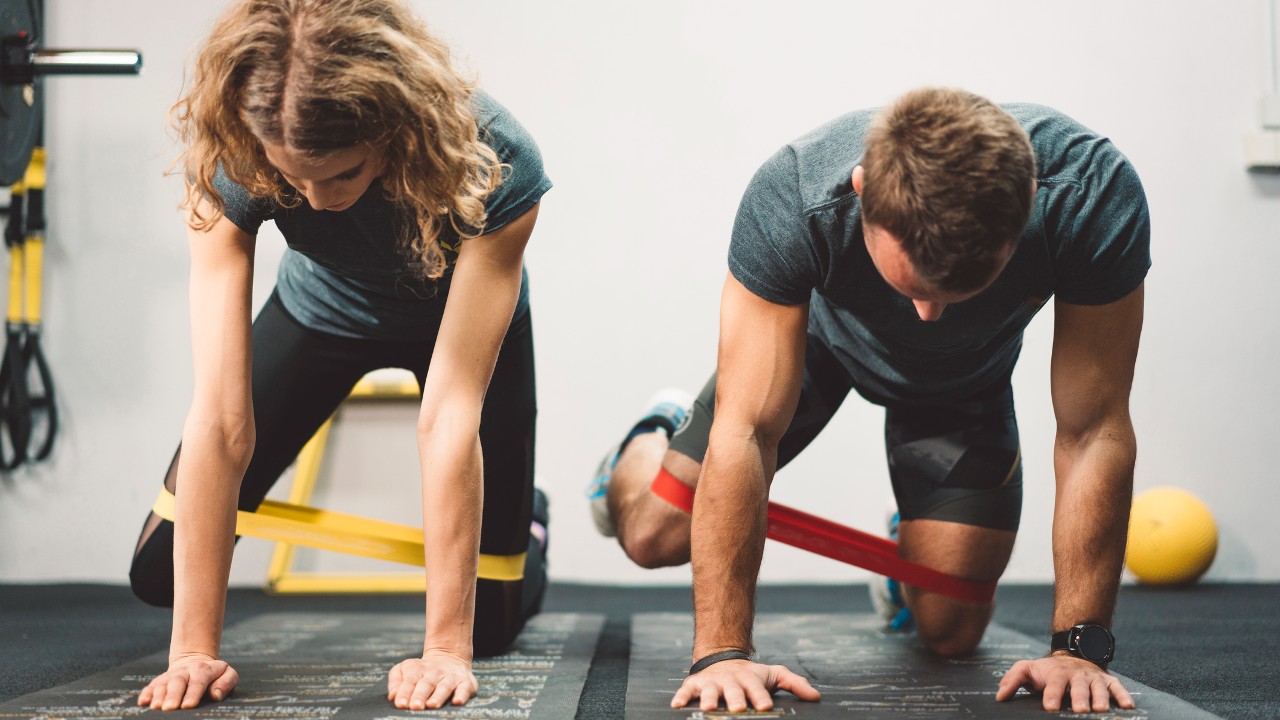
Sets 2 Reps 15 each leg
Why “This activates your gluteus medius, helping to stabilise your pelvis and reduce rotational forces on your knee,” says Harrop.
How “With a resistance band around your knees stand on one leg with a slightly flexed knee and lift your other leg out to the side slowly, then bring it back again.”
4 Bent knee heel raise
Sets 3 Reps 15 each leg
Why “Bending your knee activates the soleus muscle, which is essential for shock absorption as your foot lands on the ground,” says Harrop.
How “Stand on one leg with your fingertips lightly against the wall for balance. Bend the knee on your standing leg slightly, then raise and lower on your toes, keeping your knee bent. To make it more difficult, hold a weight in your hand.”
5 Dead bug
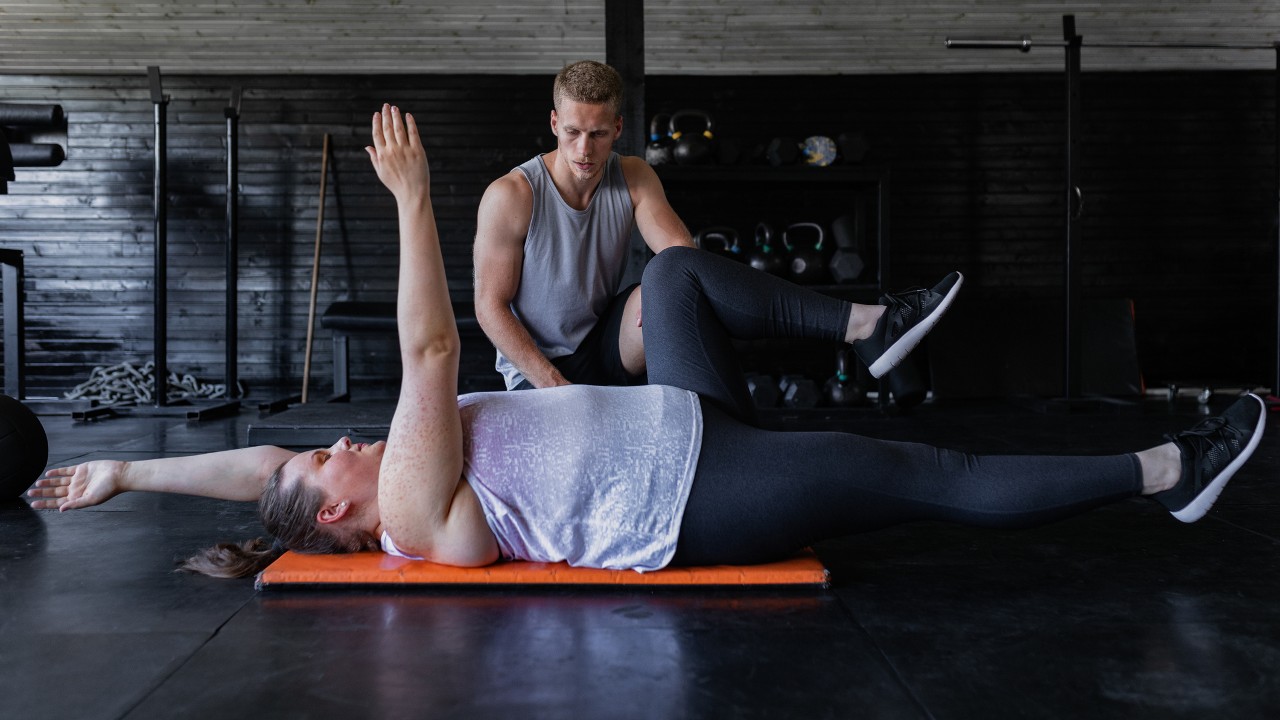
Sets 2 Reps 15 each side
Why “This will strengthen your abdominals without over-activating your hip flexors and compromising your lower back,” says Harrop.
How “Lie on your back holding your legs and arms up, legs bent at 90°. Keep your spine neutral. Slowly stretch one arm above your head and the opposite leg out straight, and then return to the starting position. Repeat on the other side. Keep your abdominals engaged and controlling the movement, and do not allow your back to arch.”
6 Elevated single-leg glute bridge
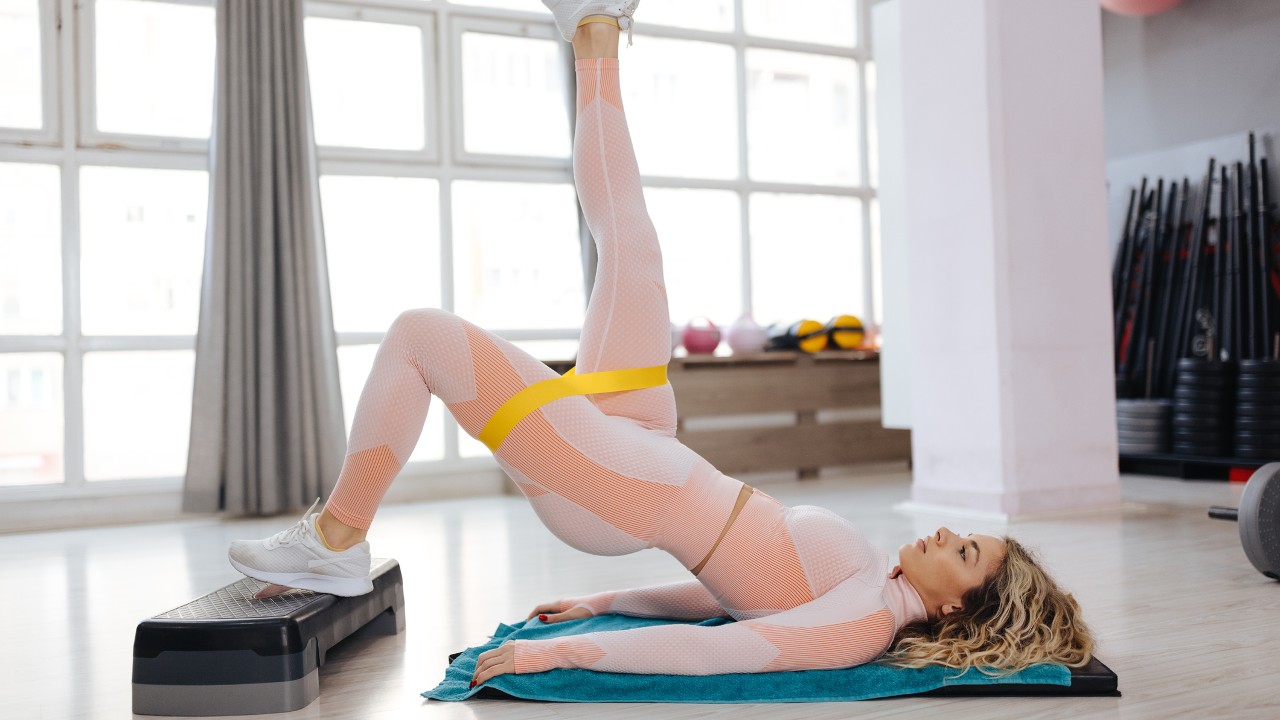
Sets 3 Reps 15 each leg
Why “This helps strengthen and switch on your glutes. This drives hip extension, which is essential for efficient running,” says Harrop.
How “Lie on your back with one foot on a low bench holding the opposite leg straight out. Driving through the heel, squeeze your glutes and lift your hips up as high as possible without arching your back. Hold for one second then slowly lower.”
7 Hip flexor stretch
Sets 3 Reps 40sec each side
Why “This stretches the quadriceps and hip flexors unloading pressure on the patella [kneecap],” says Harrop.
How “In a high kneeling position (on your knees with your body vertical and back straight), place one foot on a low bench in front of you and a pad under your knee. Keep your pelvis tucked under your body to focus the stretch on your anterior thigh.”

Nick Harris-Fry is a journalist who has been covering health and fitness since 2015. Nick is an avid runner, covering 70-110km a week, which gives him ample opportunity to test a wide range of running shoes and running gear. He is also the chief tester for fitness trackers and running watches, treadmills and exercise bikes, and workout headphones.









